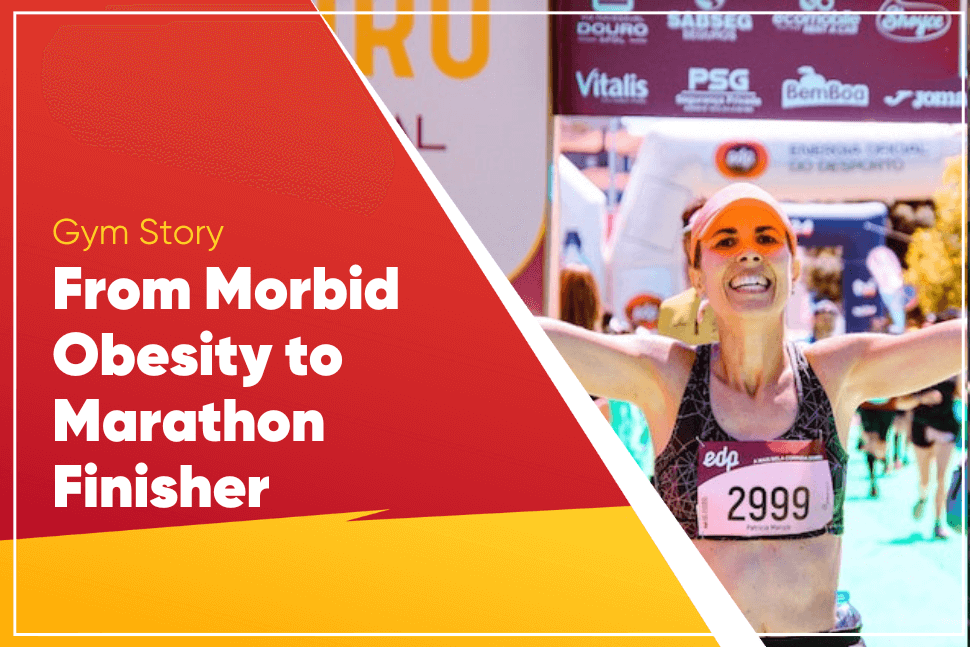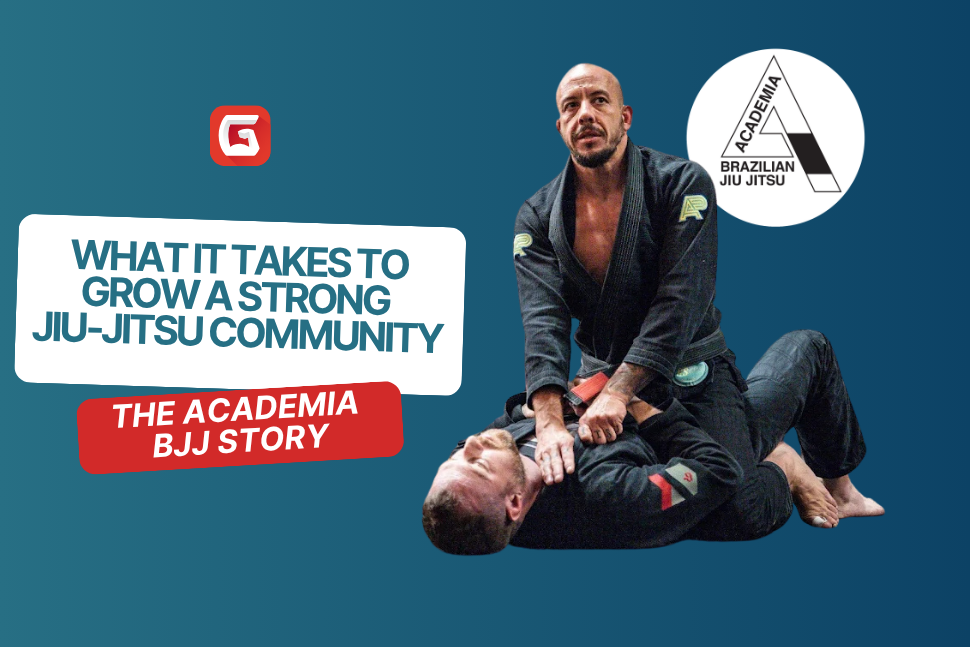From Morbidly Obese to Marathon Finisher: Mariah’s Story

Ever since she was a young girl, Mariah had been obsessed with food.
By the age of five, she was already chubby. Her parents encouraged her to get involved in school sports like hockey and netball, but she had no interest. The constant mocking of the other kids, who ridiculed her slowness and referred to her as a ‘tub of lard’, saw her spending most of her time in the school library.
At thirteen, Mariah found herself enrolled in boarding school. Her weight was up to 160 pounds with no reversal in sight. In fact, over the next three years it would keep piling on as she increasingly used food as a way to escape from her unhappiness. After downing a complete meal with dessert in the dining hall, she’d then escape to her dorm room where she’d zap up a bowl of two-minute noodles and load them with hot sauce.
The taunting of the other dorm girls was merciless, causing Mariah to withdraw further into herself. Physical education classes were a living hell for her. She’d inevitably be the last to be chosen for team sports. When she eventually trudged to stand alongside her teammates, all the other girls would let out a painful groan.
When she graduated from boarding school at age 16, Mariah wore a size 19.
Mariah ended up getting a job as a supermarket checkout operator. It involved standing on her feet for many hours at a time.
By now she was up to 185 lbs.
The weight on her ankles led to some quite severe aching at the end of her shifts. Fortunately, comfort food was near at hand. Every day before leaving the store, she’d make her way to the confectionary aisle and grab a sugar laden treat as a reward for having made it through.
Mariah’s mom was increasingly concerned about her daughter’s weight. She finally persuaded Mariah to go see a doctor. His diagnosis that she was clinically obese was a surprise to nobody. But his warning that she was in danger of developing type 2 diabetes finally managed to impress upon Mariah that she had to do something about her weight.
It was after that first doctor’s visit at age 19 that Mariah began on her yo-yo dieting journey. She’d find a fad diet that required cutting calories way back and follow it for a week or two. The scale would go down, but when she looked in the mirror she appeared exactly the same. This would discourage her and she’d give up and resort back to her normal destructive way of eating.
She tried exercise as well. But the food as reward mentality that she’d developed over the years constantly sabotaged her efforts. Her workouts would consist of walking on the treadmill for 20-30 minutes and then doing some light dumbbell exercises.
Having developed a hatred for exercise at school, it was a real challenge for Mariah to push herself through. Her reward was to stop off at a bakery on the way home and grab a blueberry muffin. Matiarh’s perception of food had become so warped that she’d convinced herself that, because it contained blueberries, the muffin wasn’t that bad. And, besides, she’d earned it!
The reality was that Mairah’s workout sessions were burning off around 450 calories at most. Yet, that blueberry muffin was packing in around 600 calories. That meant that every workout session was actually causing a 150 calorie surplus. That extra energy had no choice but to store itself as excess body fat.
Me and Mariah
Mariah walked into my personal training studio in January of 2016. I could tell that she was close to giving up and resigning herself to living inside of an obese body forever. She went to relate all the different diets and workouts she’d failed at. When I asked her why she’d decided to walk through my door, she replied that she’d told herself to give it one more shot.
So, I was it. If I didn’t manage to help her lose weight, she was going to stop trying.
During that first meeting, I encouraged Mariah to tell me her story. She went on to relate her love of food and how she had learned to rely on it to provide a measure of comfort and (very short-term) happiness to counter her general state of unhappiness.
I then encouraged Mariah to dig into herself and discover the real reason she wanted to lose weight. The first thing she came out with was that she didn’t want to die. Now not dying is a pretty powerful motivation, but it’s also quite distant - and not as specific as I wanted.
As I encouraged Mariah to dig deeper, she revealed that she was desperately lonely and she wanted to lose weight to be more attractive to a potential partner. She also had a deep longing to be a mother and wanted to be a good physical role model.
These were deep-seated emotional drivers. Having identified them, we were then able to use them to motivate Mariah in her journey.
My next task was to educate Mariah about the right way to lose weight. It started by making a distinction between weight loss and fat loss. Weight loss could include everything from muscle mass to bone tissue and even water. Yet, the only healthy thing to lose is fat tissue.
I also explained to Mariah the fallacy of spot removal. You cannot remove fat from a targeted area of the body by doing exercises for that body part. So, all the crunches in the world will not remove fat from your belly.
I also made it clear to Mariah that exercise is not the best way to lose fat and that you can never out-train a bad diet. That’s why her after-workout muffins were actually putting her in a deeper hole, regardless of the exercise she’d done beforehand.
Mariah’s Training & Diet
The biggest change that Mariah had to make was with her eating pattern. She had developed the habit of using food as a means of comforting and rewarding herself. We developed alternative, healthier strategies such as having a warm bath, watching her favorite Netflix show or going for a walk.
Over a period of several weeks, Mariah managed to rid her home of the unhealthy, carb-based foods that she had been using as comfort food. I helped her to discover healthier options that actually tasted good to replace them with.
Then we started working on calorie reduction. After working out what Mariah’s maintenance daily caloric intake level was, we reduced it by 500 calories per day. This enabled her to end each day with a caloric deficit.
After four weeks, I transitioned Mariah to intermittent fasting. This involved narrowing her eating window to just eight hours out of every 24-hour period. She would stop eating at 7 pm and then fast until 11 am the following day. After about 12 hours all of the glucose she had consumed the day before would have been used up as energy. At that point, her body would have no choice but to draw on her stored body fat reserves to meet its energy demands.
Mariah was surprised at how easy it was to follow the intermittent fasting program. It basically involved cutting out breakfast. Instead, she had a cup of black coffee (no sugar). When she got a little hungry at around 9:45 am, she’d simply sip from her water bottle.
While Mariah was going through all of these dietary changes, she also began an exercise program. We trained together three times per week, on Monday, Wednesday and Friday. I had her begin with treadmill walking at a speed of 3.5 miles per hour for 10 minutes. We gradually increased Mariah’s time on the treadmill over the first month.
Following Mariah’s time on the treadmill, I had her do a circuit routine that combined bodyweight and kettlebell exercises. Here’s the circuit we followed:
- Star Jumps
- Kettlebell Swings
- Step Ups
- Air Squats
- Wall Push Ups
Mariah would do each exercise for 15 seconds and we’d complete three rounds of the circuit.
This combination of reduced caloric intake, switching to healthy foods, cardio and circuit training produced some pretty amazing results. At the end of the first month, Mariah lost 14 pounds, going from 193 down to 179 lbs.
“Let’s Do a Marathon”
Mariah’s weight loss success fed her motivation to stay on track. I also used a number of strategies to keep her on track. We maintained the focus on her emotional drivers, but broke her long term weight loss goal down into bite size stepping stone goals that were easier for her to relate to. Then those stepping stone goals were further broken down into daily actionable steps that Mariah had to follow. That way she knew exactly what she had to do each day to stay on track for her long term goal.
Another strategy I used was to stay in touch daily with Mariah through texts and emails to keep her buoyed up. I would send motivational quotes and inspirational stories of weight loss success. One day I sent her a snippet about how Oprah Winfrey lost 72 pounds in 1994 and then went on to run a marathon.
The next day, I got a text from Mariah that read …
Let’s do a marathon!
After establishing that Mariah’s desire to complete a marathon was more than just a passing fancy, we set the goal to enter the 2017 Rotorua Marathon. It was set for May 6th. That was 11 months away.
I explained to Mariah that there were three aspects to completing a marathon:
- Physical stamina — the ability of your body to move over 26.2 miles without failing.
- Cardio-vascular fitness - the capacity to exercise for an extended amount of time without putting too much strain on your heart or becoming out of breath.
- Endurance - the capacity to regularly and reliably generate enough energy to support your physical activities for several hours.
Despite having worked with me for nearly six months and losing about 45 pounds, Mariah needed serious work in all three areas.
Running a marathon requires the ability to exert a lot of physical effort on your body for several hours, followed by a few days of stiffness and pain. Spending months performing long runs, recovering from long runs, and preparing for your next long run are all part of training for a marathon.
We began building up Mariah’s running distance, first on the treadmill, then outdoors. By now, I had trained Mariah to stop obsessing over how much she weighed and concentrate on how good she was feeling. This helped in training for the marathon. She was able to stay zoomed in on improving her distance, while the weight took care of itself.
Mariah needed to eat more carbs to fuel her training. If she’d still been obsessed with the scale, the increased calorie count would have done her head in. As it was, the extra energy she was burning off with her extended runs meant that she was still losing between one and two pounds per week.
With close to a year to prepare, we were able to set monthly stepping-stone distance goals for Mariah. We started at two miles. We then added half a mile per week, doing three weekly runs.
As we meet each weekly stepping stone target, Mariah learned to compartmentalize the challenge. Rather than thinking about running for twenty-six miles, she was zoned in on running a mile, 26 times. That change in mindset made a big difference.
As well as her 3 weekly runs, Mariah also did a couple of strength and flexibility workouts each week.
On the way to the Rotorua marathon, Mariah completed a 5k, 10k , and then a half marathon. These were invaluable as they allowed her to experience the whole running event atmosphere. She learned to deal with the stress of traveling to the venue, registering, being part of a big crowd of runners and spectators, grabbing water as you run past the refreshment stations, and cooling down when it’s all over.
Prior to the big event, we tapered our training down. By the second week in October, she was ready to nail her first marathon. There was no more benefit to be gained from putting in the long hours. So, for these last couple of weeks, she did shorter runs of about 7 miles.
Success
Maria was one of around 7,000 people who had entered the Rotorua marathon.
It was a typical hot summer’s day in Rotorua, New Zealand. The route started at the iconic government gardens and made its way through the city streets and then wound around Lake Rotorua to the small town of Ngongotaha before heading back towards the government gardens and the finish line just a few hundred meters away from the start.
At around the eighteen miles mark, many of the runners, including Mariah, were struggling and doubting their ability to finish. But then someone in the crowd would call out to inspire them and push them to the finish line.
“You have got this!” a woman yelled over the rope as Mariah was approaching the 25-mile mark and wondering why on earth she’d signed up for this.
“You are doing fantastic," the woman said, with a huge smile on her face.
That was the extra motivation Mariah needed to make it to the finish line.
She completed her first marathon in 4 hours and 17 minutes. As she stepped over the line, she weighed 148 pounds.
Three months later, while training for her second marathon, Mariah met the guy who was her husband, who also happened to be a client of mine. Their first child is now three years old. And Mariah has clocked up four marathons! She proved that going from obese to marathon running was possible!
Gym management software that frees up your time and helps you grow.
Simplified billing, enrollment, student management, and marketing features that help you grow your gym or martial arts school.





